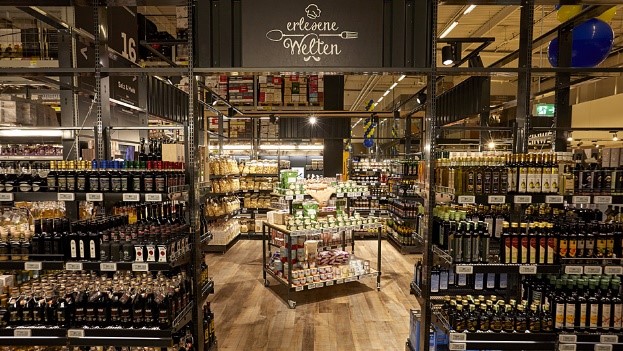Over the past 25 years, the importance of category management in the retail environment has rapidly increased:
From a supplier-driven assortment policy to a focus on buyer behavior analysis, where cannibalization and halo effect are considered.
From a store planning process that was "worked out" manually with large store plans and markers often at the highest level in management, to strategically meaningful merchandise group placement based on valuable analyses.
From "pushing pictures" in planogramming and the creation of "One Size Fits All" planograms to automated optimized item placement for each individual shop.
This development was urgently needed because the number of products available on the market has multiplied. Completely new (sub-)categories are created every year and buyer behavior changes at ever shorter intervals.
The increasingly complex requirements and possibilities have their influence on the entire Category Management process. We still encounter almost everywhere the structure in which assortments, planograms, and branches are optimized and controlled in different departments. Thus, every retailer faces the challenge of integrating these processes in a sustainable way, as changes in one area always have a direct impact on the other areas. Therefore, everyone must be aware that assortment optimization can only work with knowledge of the available space. This means that each product in an assortment can be placed with the capacity that prevents stock shortages and overstocking.
Even though in everyday life it is often the case that many categories are managed either by the retailer without further expertise from the industry or by the instructions of the respective category advisor, collaboration between the two parties should take place, especially in the destination and core categories. This is because each party has knowledge that is not available to the partner but is essential for successful category management. For example, the retailer has knowledge about its shops, knows its strategy and its customers, whereas the manufacturer can contribute specific information about products and buyer behavior in the category.
Points to consider to ensure a successful collaboration
When a retailer and a supplier agree on a CM project, there are several important points to consider in order to ensure a successful collaboration.
As in any project, the fundamental questions of resources and costs must first be clarified in a binding manner for both sides. What skills and data are needed? And who can provide or procure these?
After this, the category must be precisely defined. This includes identifying the products that belong to the category from the buyer's perspective. It makes sense to use the classic customer survey or a receipt analysis to gather the necessary information. The result should then be so specific that a customer decision tree can be derived based on the customers' search behavior within the category. Each product in the assortment must be uniquely assigned to the CDT.
It is up to the retailer himself to define the role in which the category is classified according to his strategy. A distinction is made here between:
Destination category, with which a retailer differentiates itself from the competition and which contributes to its image formation
Core category, considered as standard in the total assortment
Supplementary category, for products designed to enable customers to satisfy all their needs at a point of sale
Seasonal category, for an additional and time-limited assortment
A comprehensive review of the performance of the category and its subcategories reveals the growth potential in the individual areas. Depending on the available data, the benchmark can be the own average performance in the category, the overall market or the direct competitor.
Depending on the potentials that can be identified within the category, targets are set. These can relate to buyer, market, financial or productivity potentials and are usually specified for a period of 3 years.
In order to achieve these goals, appropriate actions are defined. The actions can help to secure existing market shares, increase profits or improve the image of the retailer. Please note that there is not one action for the entire product group, but those actions are defined for each sub-group, as each sub-group usually has different potentials.
Each of the selected measures has an influence on either the assortment, the placement, or the promotion of the products in a category; these are the adjustment tools that can be used to achieve the goal.
For example, destination categories are presented very prominently in the shop, with special furniture and lighting. High quality in the assortment is aimed for and certain products are exclusively listed to signal leadership over the competition.
The developed changes then must be implemented on the floor. Usually, the first step is to optimize certain test shops and compare the results with those of the control shops. If necessary, the measures have to be readjusted. If the results are right, they are rolled out to all stores.
At this point, the project is not really finished. The results must be compared with the defined targets at regular intervals. Adjustments to the measures are also necessary for the medium and long term.
Michael Krebs
Senior Business Consultant at Wysupp
18 August 2021

